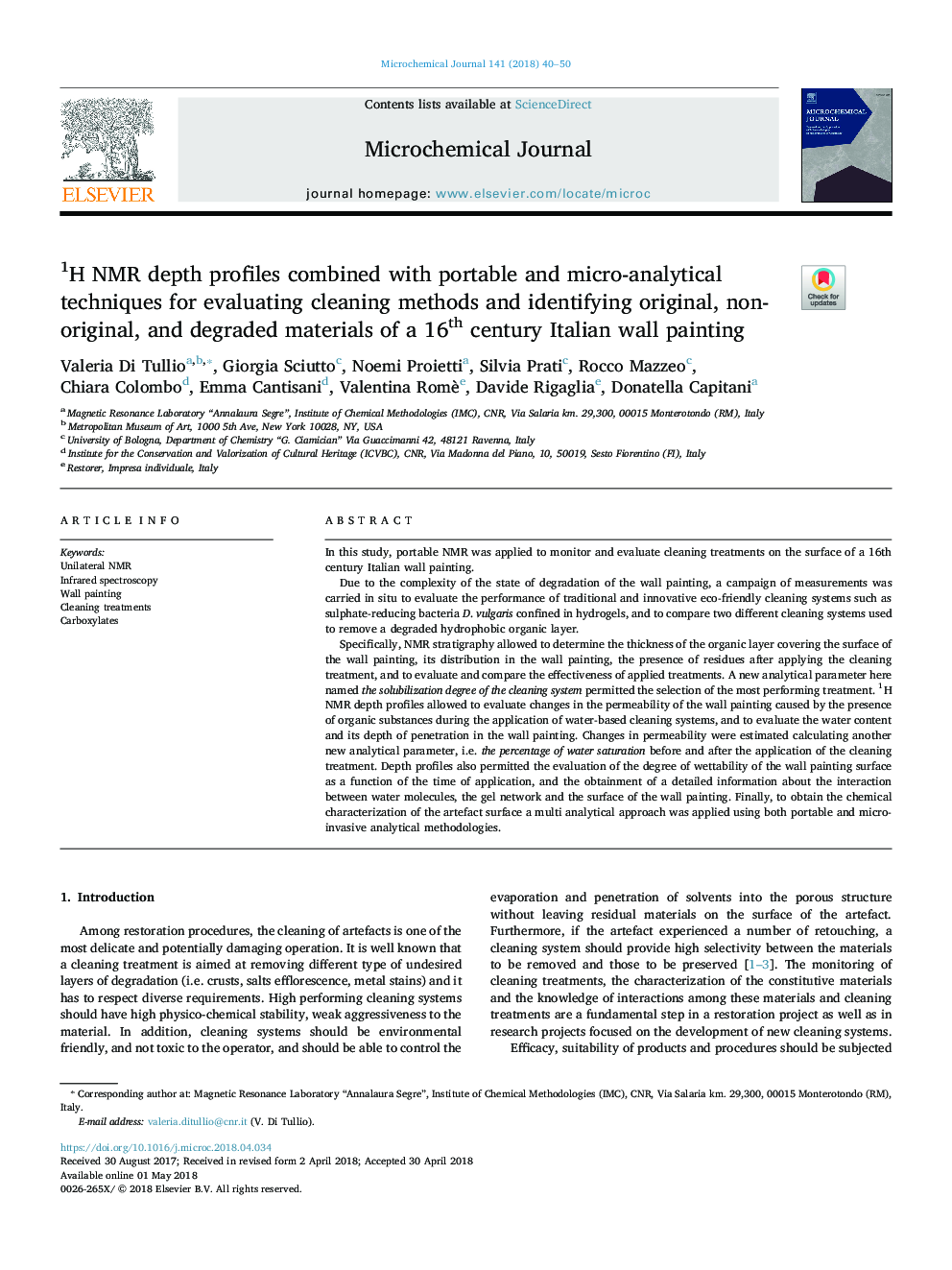| Article ID | Journal | Published Year | Pages | File Type |
|---|---|---|---|---|
| 7640051 | Microchemical Journal | 2018 | 11 Pages |
Abstract
Specifically, NMR stratigraphy allowed to determine the thickness of the organic layer covering the surface of the wall painting, its distribution in the wall painting, the presence of residues after applying the cleaning treatment, and to evaluate and compare the effectiveness of applied treatments. A new analytical parameter here named the solubilization degree of the cleaning system permitted the selection of the most performing treatment. 1H NMR depth profiles allowed to evaluate changes in the permeability of the wall painting caused by the presence of organic substances during the application of water-based cleaning systems, and to evaluate the water content and its depth of penetration in the wall painting. Changes in permeability were estimated calculating another new analytical parameter, i.e. the percentage of water saturation before and after the application of the cleaning treatment. Depth profiles also permitted the evaluation of the degree of wettability of the wall painting surface as a function of the time of application, and the obtainment of a detailed information about the interaction between water molecules, the gel network and the surface of the wall painting. Finally, to obtain the chemical characterization of the artefact surface a multi analytical approach was applied using both portable and micro-invasive analytical methodologies.
Related Topics
Physical Sciences and Engineering
Chemistry
Analytical Chemistry
Authors
Valeria Di Tullio, Giorgia Sciutto, Noemi Proietti, Silvia Prati, Rocco Mazzeo, Chiara Colombo, Emma Cantisani, Valentina Romè, Davide Rigaglia, Donatella Capitani,
